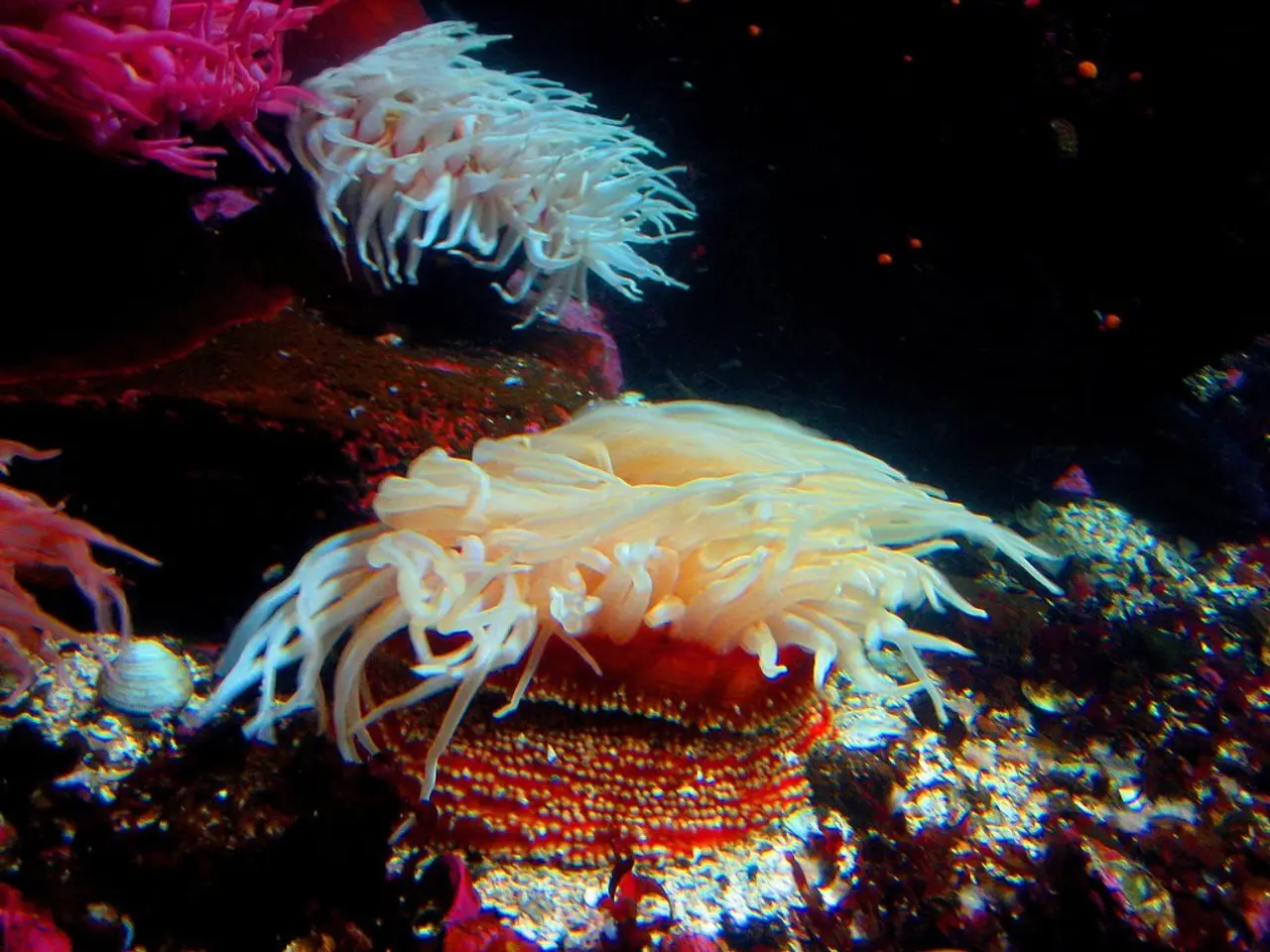Ocean acidification poses a covert danger to the shellfish industry
In the vast expanse of the Pacific Ocean, a silent crisis is unfolding. Ocean acidification, a consequence of increased carbon dioxide (CO2) absorption by seawater, is causing harm to marine life and posing a significant threat to shellfish aquaculture industries in countries like Australia and New Zealand.
Ocean acidification occurs when seawater absorbs rising amounts of CO2 from the atmosphere, leading to a drop in pH and an increase in hydrogen ions. This increase weakens the ability of marine organisms, such as corals, oysters, clams, and plankton, to build their shells and skeletons.
The decline in pH levels is particularly concerning for the shellfish aquaculture industry in New Zealand, where it poses a potential threat to the growth, condition, and survival of species like green-lipped mussels, oysters, and clams. Similarly, Australian oyster growers are experiencing losses and income decline due to ocean acidification.
To combat this crisis, Australia, New Zealand, and other Pacific nations are implementing a range of strategies. These include monitoring and research networks, such as the New Zealand Ocean Acidification Observing Network (NZOA-ON), which tracks acidification levels and collaborates internationally.
Both countries are also pursuing shellfish aquaculture adaptation strategies, including selective breeding programs to develop shellfish strains more tolerant to acidic conditions. Field experiments, such as using waste shells and aeration around mussel farms, are also tested to alleviate local acidification impacts.
In Pacific Island nations, where commercial aquaculture is less prevalent but reef-dependent livelihoods are critical, efforts focus on protecting reef ecosystems, addressing combined stressors like warming and pollution, and supporting food security through regional collaboration.
Australia and Pacific nations also engage in international initiatives like the United Nations Ocean Conference and support the development of strong global ocean governance, including legally binding treaties aimed at conserving 30% of ocean areas by 2030.
Capacity-building and international cooperation are also crucial. Organizations such as the IAEA Ocean Acidification International Coordination Centre facilitate capacity building and knowledge sharing to help member states, including Australia and Pacific countries, adapt to ocean acidification impacts and fulfill Sustainable Development Goal 14.3 reporting requirements.
However, challenges remain in securing sufficient resources and translating global commitments into effective local action. The decline of coral reefs, which threatens the livelihoods of millions of people, especially in countries like Australia where reefs also drive significant tourism revenue, is a pressing concern.
In response, researchers like Dr. Laura Parker at the University of Sydney and the Port Stephens Fisheries Institute are intensifying their research on how temperature, salinity, and pH affect oyster health due to climate change. The team is testing selectively bred strains of oysters for their ability to withstand chemical and physical stressors linked to climate change.
Researchers in New Zealand have also tested mitigation strategies such as using waste shells and aeration to alleviate acidification around mussel farms. The hope is that by identifying and cultivating more resilient oysters, the aquaculture industry can adapt to the changing ocean and potentially thrive in it.
Yet, ocean acidification is not just a threat to the shellfish industry. In the greater Pacific area, it poses a significant threat to communities that heavily rely on reef ecosystems and local shellfish harvests for food security and cultural practices. The crisis is eroding sovereignty, stability, and connection in coastal communities that contributed the least to the crisis.
As we navigate these challenges, it is crucial to remember that the health of our oceans is intrinsically linked to our own. The future of shellfish aquaculture, marine ecosystems, and coastal communities depends on our collective action to address ocean acidification.
- The increase in hydrogen ions due to ocean acidification weakens the ability of marine organisms like corals, oysters, clams, and plankton to build their shells and skeletons.
- Australia, New Zealand, and other Pacific nations are implementing strategies to combat ocean acidification, such as monitoring networks, selective breeding programs for shellfish, and international collaboration.
- In Pacific Island nations, where commercial aquaculture is less prevalent, focus is on protecting reef ecosystems, addressing combined stressors, and supporting food security through regional collaboration.
- Ocean acidification is not just a threat to the shellfish industry but also poses a significant threat to communities heavily relying on reef ecosystems and local shellfish harvests for food security and cultural practices.




